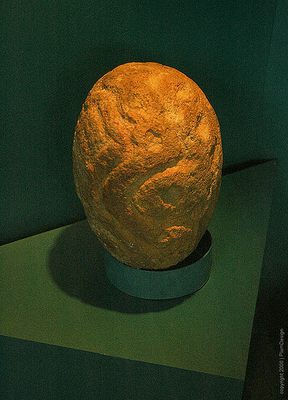About
Lepenski Vir is an important archeological site with remains of a settlement from the Mesolithic era, with the remains of over 136 houses of an early settled hunter gatherer Cro Magnion group.
It is situated on the banks of Danube river near the Iron Gates gorge and the town of Donji Milanovac in eastern Serbia.
The earliest artifacts date to 7000BC. The culture reached its peak in period 6500 BC to 5500 BC.
The most remarkable feature of Lepenski Vir site is the complex uniform floor plan which all of uncovered buildings share. While most of human cultures have developed architectural elements based on rectangular or circular layouts, Lepenski Vir buildings have a layout which is based on elaborate geometry of equilateral triangle grid and 60 degree circle sections. It appears that this kind of floor plan was constructed using an intricate compass and straight edge technique, indicating that inhabitants of Lepenski Vir possessed the understanding of geometry seemingly much greater then their hunter-gatherer lifestyle would require.
The whole settlement was organized according to same basic underlying pattern and oriented along the riverbank, an obvious focus of attention of inhabitants.
Another intriguing aspect of Lepenski Vir culture is its sculptural art. Lepenski Vir sculptures represent human heads with distinct fish like features carved out from round sand stone cobbles collected from the near by riverbank.
Related Tags
Balkans Road Trip: Serbia, Croatia & Bosnia and Herzegovina
Traverse the beauty and history of the Balkans through locals' stories.
Book NowPublished
June 25, 2009











































